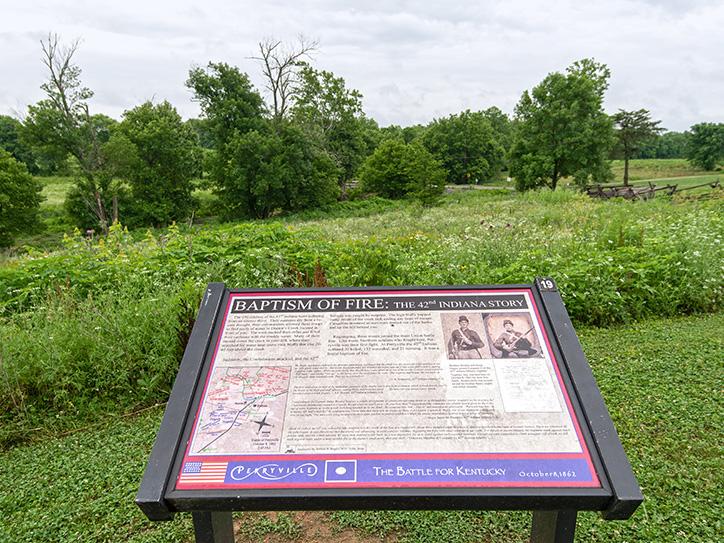Confederate monuments are in the crosshairs.
Officials in Virginia, North Carolina, Alabama and beyond are calling for the removal of memorials to rebels and their cause.

In Kentucky, authorities evicted the Jefferson Davis statue from the capitol rotunda. Members of Congress have also considered striking rebel names from military bases and might remove 11 statues from the U.S. Capitol.
This news evokes a familiar chorus from those who oppose removing Confederate monuments. They claim that the elimination of these memorials from public spaces is “erasing history.”
As the former executive director of the Perryville Battlefield Preservation Association, an organization that worked to protect Kentucky’s largest battleground, I have a request for those who fear the erasure of our past.
Please don’t worry about statues that were installed decades after the Civil War. Instead, help our battlefields, where history actually happened.
Kentucky has already made great strides protecting our Civil War battlegrounds. Thanks to not-for-profit organizations, “friends” groups, public-private partnerships, volunteers, grants, donors, the American Battlefield Trust and state and local governments, the past 25 years have been a golden age for Bluegrass state battlefield preservation.
Perryville, for example, is now a national model for historic preservation. Protected land there has grown from 98 to nearly 1,200 acres and more than ten miles of interpretive trails educate the public about the site’s significance. Moreover, the battlefield now serves as a substantial recreation area and wildlife sanctuary where native Kentucky plants and animals are protected.

This is mirrored at other sites across the commonwealth. Local efforts at the Mill Springs battlefield near Somerset and Camp Nelson at Nicholasville have led to both being named National Monuments. Battlefields at Richmond, Munfordville, Camp Wildcat (Laurel County), Tebbs Bend (Taylor County) and Middle Creek (Prestonsburg) have also found great success.
There is, however, much work left to be done. More land needs to be protected, signs need to be replaced, museums updated and interpretation expanded. To do this, battlefields and other historic sites must survive on memberships, donations, grants and visitation.
Therefore, if you’re worried about history being erased, please join the effort to protect Kentucky’s Civil War sites, where history actually happened. Donate your time, talent and money to support local and national organizations that are working to preserve them for future generations.
Equally important, visit these sites and spend money. Pay museum admission fees, buy something from their gift shops and drop some bills in their donation boxes. Because museums and historic sites have also been hit hard by the COVID pandemic, these places need our support.
During the Civil War, Abraham Lincoln reputedly said, “I hope to have God on my side, but I must have Kentucky.” Today, let’s all be on the same team and work to protect our battlefields and historic sites. History happened there.
(Stuart W. Sanders’ latest book, “Murder on the Ohio Belle,” examines Southern honor culture, vigilante justice and the Civil War through the lens of an 1856 murder on a steamboat. Find him on Twitter @StuartWSanders.)
Stuart W. Sanders is the Kentucky Historical Society's Director of Research and Collections. His latest book, “Murder on the Ohio Belle,” examines Southern honor culture, vigilante justice and the Civil War through the lens of an 1856 murder on a steamboat. Find him on Twitter @StuartWSanders.


